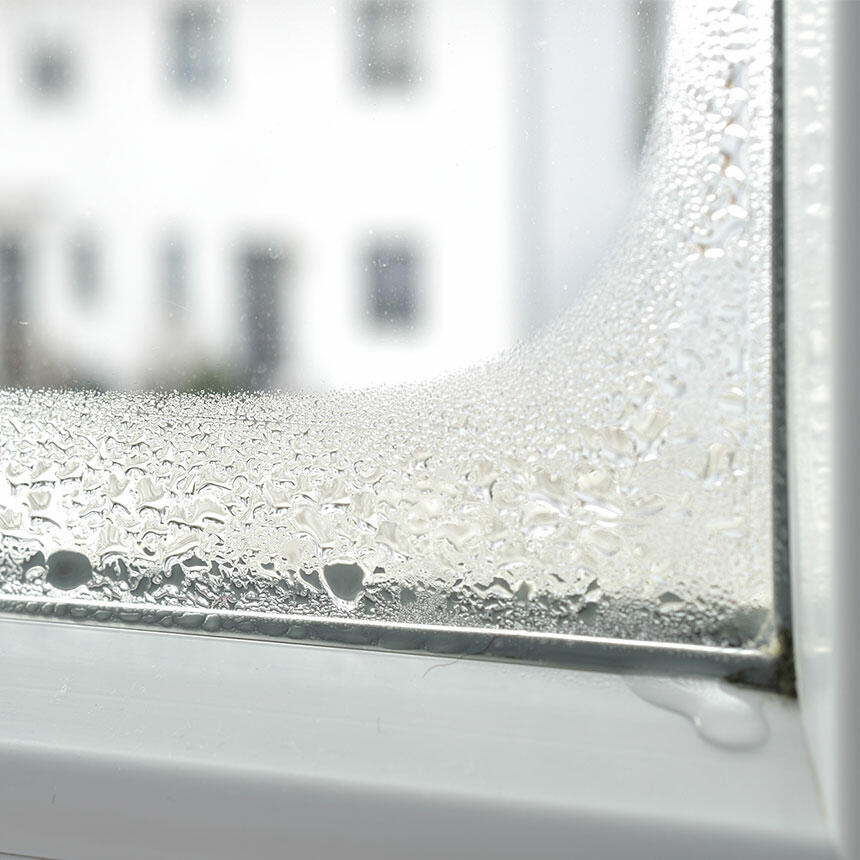Airing
Ventilation with the right ventilation concept
The simple solution for more well-being
Changes in living habits and the energy saving regulations inevitably lead to a change in ventilation behavior. Due to increasingly dense building shells and inadequate ventilation through the window, the polluted, used air is not exchanged sufficiently! The "fresh breath of the living space" is not only important for the preservation of the building structure. "Fresh wind" or "stuffy air" are important factors influencing the well-being and health of the residents.
Why ventilate?
Avoiding the formation of mold and condensation
Beware of moisture!
There are a number of sources of moisture in every home: Water vapor is produced in the kitchen and bathroom. Houseplants and even the residents constantly give off moisture (e.g. around one liter in eight hours while sleeping). Condensation, mold and moisture are extremely dangerous to your health. Take precautions! Protect yourself and your home from consequential damage.
A three-person household produces an average of 12 - 14 liters of water a day.
Depending on its temperature, air can only absorb a limited amount of water in the form of water vapor. Mold can form at as little as 80% humidity.
Problem: • Absence! • Building too tight!
Solution:
- New windows with integrated ventilation elements!
- Regulated ventilation!
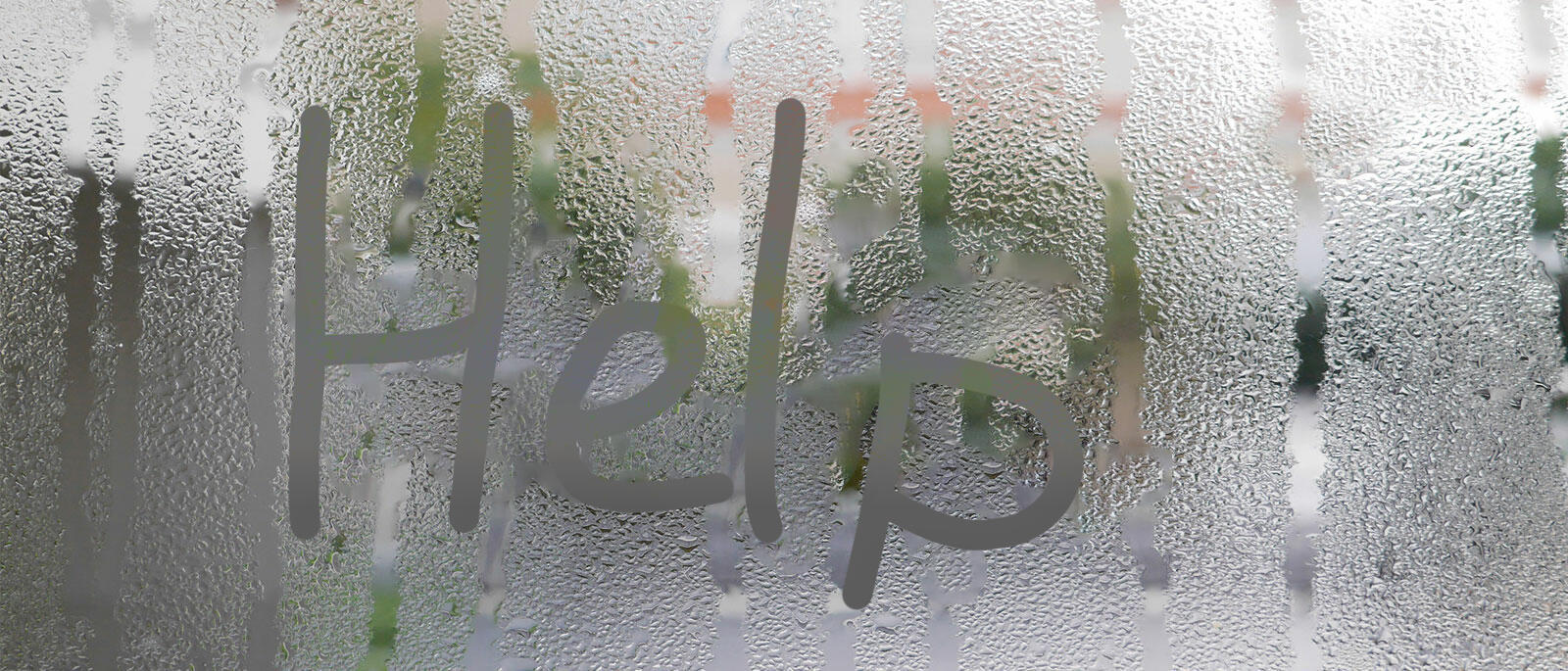
Your specialist partner will be happy to advise you!
Old, leaky windows automatically caused uncontrolled air circulation. If you have replaced more than a third of your windows during the renovation, you must work with your specialist partner to create a ventilation concept in accordance with DIN 1946-6. Your specialist partner will explain a new ventilation behavior to you and advise you on the measures you need to take to avoid moisture damage to the building structure.
Leave everything to your ventilation
Those who rely on modern ventilation devices and systems are therefore well advised:
Ventilation units (1-5)
Make the supply of fresh air and the removal of air from the room a safe bet even when you are away. The use of ventilation units prevents the formation of mold, which is good for your health and protects the building structure.
Soundproof fans (2)
Ensure quiet interiors for a healthy sleep, even in noisy areas.
Ventilation systems (4) (5)
Ensure consistently high indoor air quality with low energy consumption and contribute to a noticeable reduction in heating costs.
Fans with special filters (4, 5)
Free the incoming air from harmful contaminants such as pollen or fine dust.
(1) GAYKOSafeGA 5000 SL with motor drive
Houses with new windows are becoming increasingly airtight, which is why regulated and sufficient ventilation is extremely important to prevent mold formation. With GAYKOSafeGA® 5000SL you have the option of ensuring a pleasant indoor climate through targeted ventilation. You can control this according to your wishes.
Additionally: In addition to manual operation, the new GAYKOSafeGA®5000SL window can be upgraded with GAYKOA-Drive Technology. This automation and comfort solution for basic, comfort and premium technology with sensors for rain, wind, temperature and CO2 humidity meets the desire for flexible ventilation and enables all requirements for barrier-free construction and comfortable living. The premium version can be operated via smartphone or tablet.
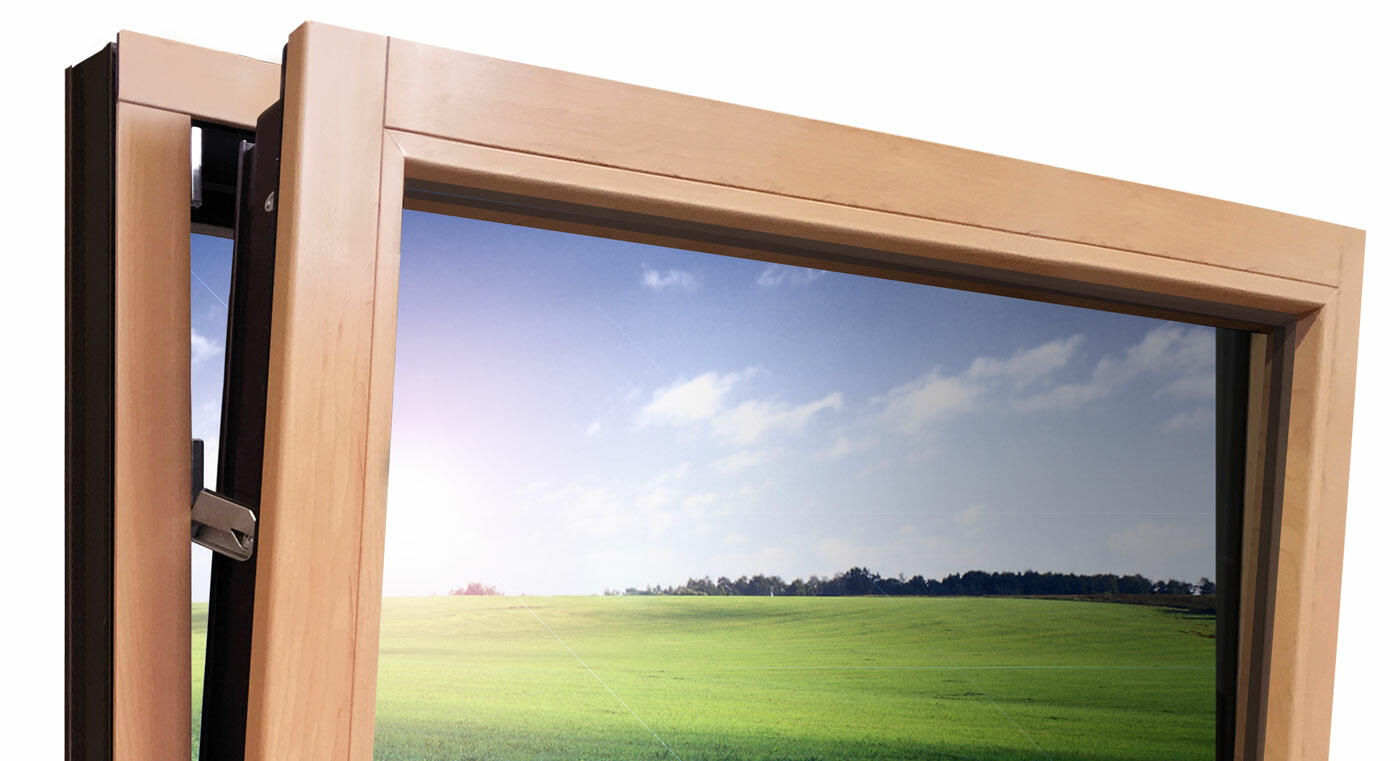
(2) Humidity-controlled fan Aereco ZFHA 5-35
Modern design with a maximum of functions
The new modern design of the Aereco ZFHA 5-35 enables perfect integration into the window. Its high-quality insulation material in combination with an optionally available acoustic base plate and an acoustic weather protection hood provides acoustic damping. And this with permanent air quality optimization thanks to humidity control.
- Passive ventilator
- 42 mm viewing height
- Pressure difference ventilation
- Hygrometric ventilation
- Plastic housing
- Mounting on window sash or on extension
- Optional as a soundproof ventilator
- Optional weather protection outside, including insect protection
- Optionally adjustable
- Optional with air flow limiter
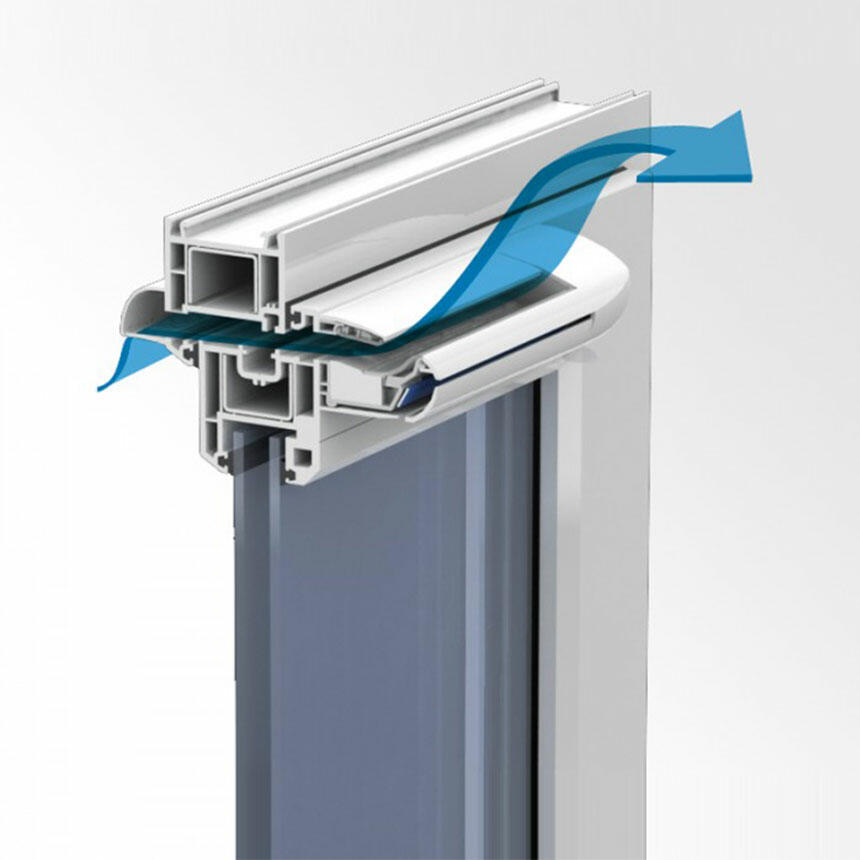

3.) Window rebate ventilator Arimeo classic S4
The window rebate ventilator blends in with its surroundings and ensures balanced air exchange. Thanks to compact and precise technology, a large number of fans can be discreetly integrated into the window if required. This makes the ventilator invisible and self-regulating even with high air volumes. It sensitively perceives its surroundings and precisely controls the ventilation. When wind and weather make it necessary, the Arimeo ventilator ensures that the windows are sealed with pinpoint accuracy. Precise technology makes it possible: precise air flow regulation.
- Passive ventilator
- Visually concealed in the window rebate
- Flexible joint technology for precise regulation of air flows
- Ensuring moisture protection ventilation through cross ventilation
- Can be used for stop and center seals
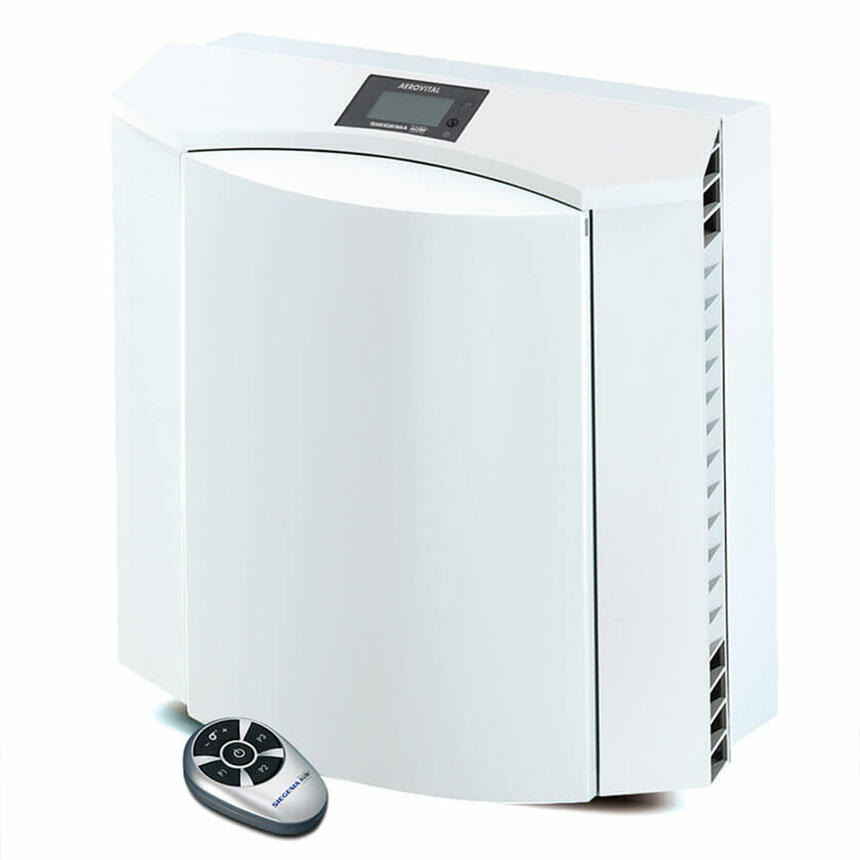
(4) Wall fan Aerovital
Modern universal fan with pollen protection, heat recovery and full comfort.
A healthy sleeping and living room climate with ease and efficiency.
With the pollen-filtered fresh air supply and highly effective sound insulation, the wall fan ensures a healthy room climate in peace and quiet and also helps to save energy thanks to integrated heat recovery. Its air output can be easily regulated in ten levels using the remote control and its effective pollen filtering lets even allergy sufferers breathe a sigh of relief. The automatic control and the option for individual programming also contribute to this ease of ventilation. The wall fan is suitable for both new buildings and modernizations.
- Wall fan including 2-way pipe
- For wall thickness up to 500 mm
- Weather protection and remote control
- Pollen-filtered fresh air supply
- Integrated high sound insulation
- Heat recovery up to 73%
- Automatic temperature and humidity control
- Fan can be switched in 10 stages
- integrated sealing caps
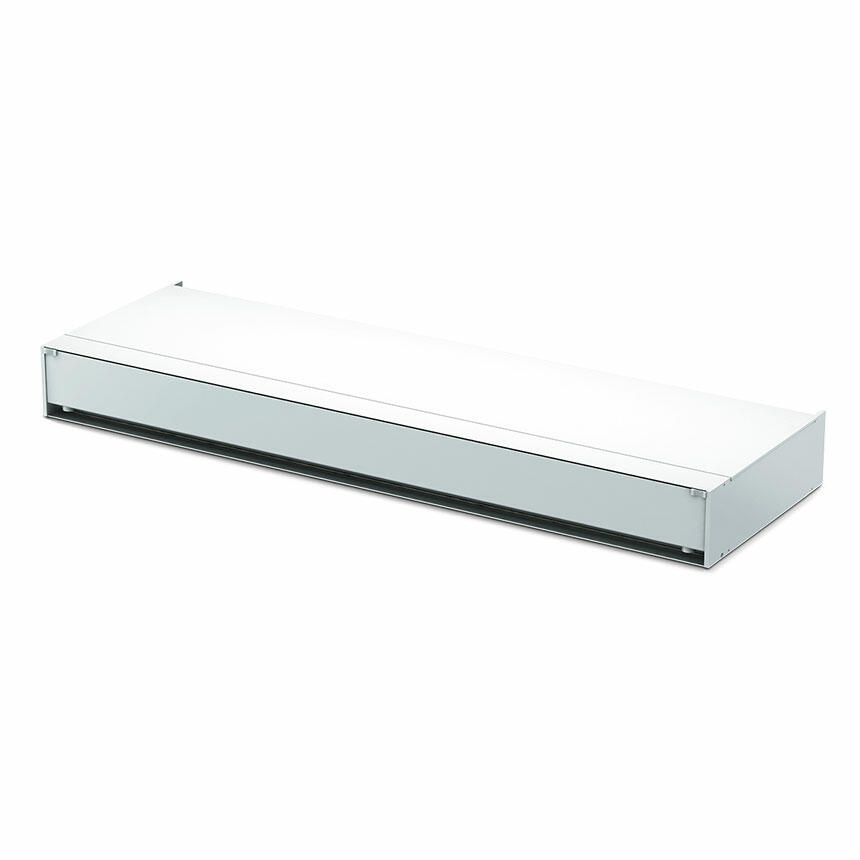
(5) Under-bench ventilator Aeromat VT WRG 1000
Versatility even for demanding facade solutions.
Technically demanding projects require a ventilation system that can be flexibly but harmoniously integrated into any object. The Aeromat VT window ventilator achieves this with its clever modular design, which allows it to adapt perfectly to individual requirements, and with its very flexible installation options. In many years of collaboration with architects and specialist planners, individual suggestions have been made for almost every installation situation - from invisible integration into the facade to inclusion in modern interior design, for which the new front profile also offers clear visual advantages. The Aeromat VT impresses as an active or passive fan with high sound insulation and low energy consumption.
- Supply and exhaust fan with heat recovery
- Installation below the window sill - weather protection and remote control
- Soundproof fan with pressure difference ventilation, with fan and heat recovery
- thermally separated
- Air can be filtered using optional filters
Living climate measuring device
The correct humidity and room temperature have a significant influence on the living climate and thus on the comfort of the residents. With the GAYKO living climate measuring device, you always have the room temperature and relative humidity under control.
Our recommendation:
- Relative humidity in winter approx. 40% and in summer approx. 50%
- Temperature in all rooms at least 18°C
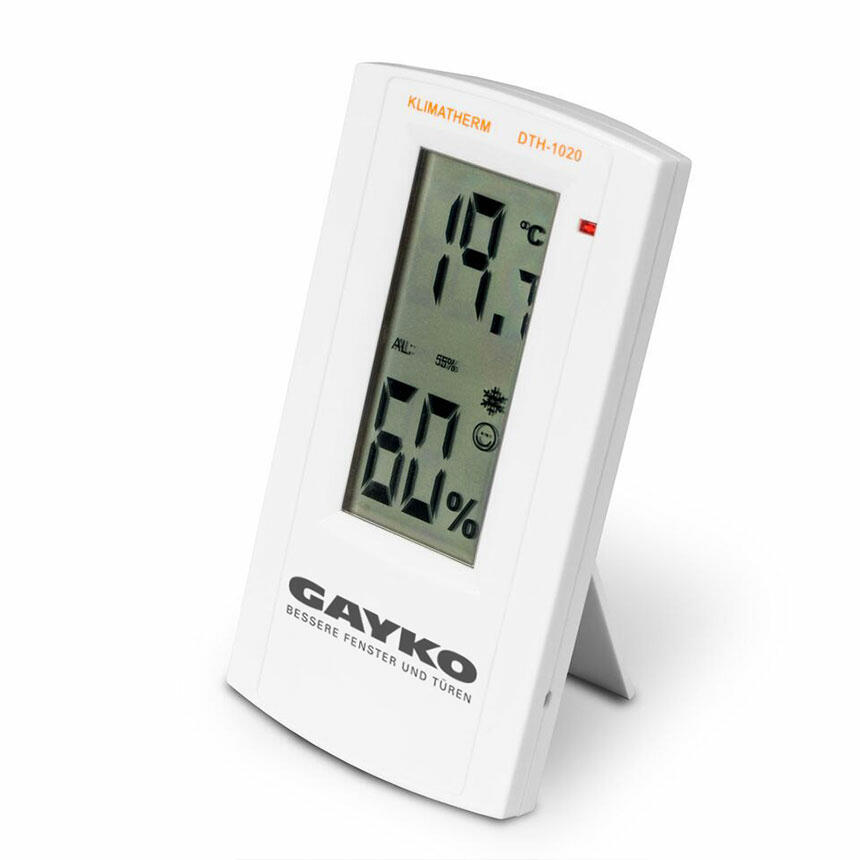
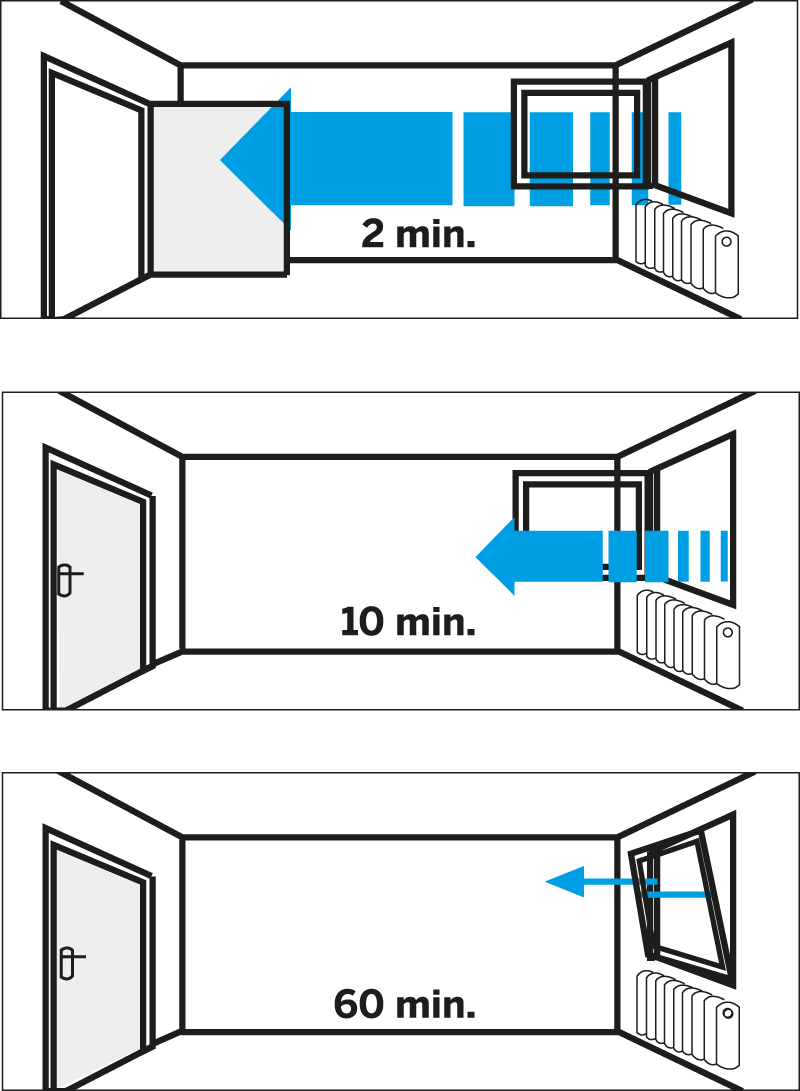
This is how you ventilate properly!
Ventilate all rooms for 10 - 15 minutes in the morning (cross ventilation/draft). Warning: Continuous ventilation in the tilted position means cooling of the surrounding masonry - the risk of moisture and mold increases. You can avoid this with targeted and time-controlled ventilation. GAYKO SafeGA® 5000SL* offers the option of ventilating for a limited time and safely in the tilted position. Either manually or, when you are away, automatically with the GAYKO A-Drive Technology.
Always ventilate the kitchen and bathroom immediately after cooking, showering,
bathing, wiping or washing. When quickly ventilating the bathroom and kitchen to dehumidify, the interior doors should be closed.
The heating should be switched off during ventilation and switched on again after the windows have been closed. The target room temperature should be between 18 °C and 22 °C, especially in the winter months, even in unused rooms.
Ventilate at least two to four times a day for around 10 minutes. The more often you spend time in the rooms, the more often you should ventilate.
Practical questions - Practical answers
expand_moreIs too little ventilation harmful to health?
Yes, but...
If you want to ensure that your home is furnished in a natural and/or environmentally friendly way and that you use cleaning products, etc., you can go with your own initiative. This means that economical ventilation, based on the perceived need for fresh air, is always sufficient to create a healthy indoor climate. However, it is also a prerequisite that the building structure is "in order" to the extent that the resulting humidity in the room does not lead to the formation of mold.
expand_moreDo external walls have to be "breathable"?
No!
If "breathing" means that air or, in particular, water vapor must be able to diffuse easily through the external wall, this question can be answered with a clear "no". When the term "breathing walls" is used, the impression is often created that a large part of the air exchange between inside and outside takes place via the walls. However, even with brickwork that is known to be highly “breathable”, water vapor diffusion only accounts for 25% of the amount of moisture removed by normal (window) ventilation.
To stay with the image: to attribute greater importance to “wall breathing” for indoor air quality than it deserves according to these percentages is as foolish as holding your mouth and nose shut and then leaving the body to breathe through your skin.
The so-called “breathing” of the wall only takes place in the first 12 cm of the inside of the wall (see next question), so external insulation (e.g. thermal skin) only influences the indoor climate insofar as it makes the walls warmer, which is perceived as comfortable.
expand_moreDo blocking surfaces worsen the Room climate?
Yes and no!
Surfaces that are in contact with the room air can absorb "excess" amounts of air pollutants. This so-called sorption capacity is best for natural fibers (carpets, curtains, upholstery), paper (wallpaper, books) and porous softwood fiberboards, good for untreated or vapor-permeable glazed wood and satisfactory for mineral lime and clay plasters.
The following have an unfavorable effect: varnish and oil paints, all plastic surfaces, surfaces made of synthetic textiles, ceramic tiles and cement plasters. This applies in particular to the buffering of peak humidity values in the kitchen and bathroom and when living spaces are heavily occupied.
BUT: The absorbed vapors are released back into the room (albeit possibly with a time delay). The hope that the absorbed moisture can be "breathed away" by external walls is also deceptive (see question 2). The sorption processes discussed here only take place between the room air and the first 10-20 mm of the wall thickness, so that one can at best speak of a type of "surface respiration". Even an "organic house" can only really "breathe" by ventilating.
expand_moreWhat to do if the air is too dry?
First: buy a hygrometer (e.g. department store, optician's shop) and check whether and when the relative humidity drops below 40%. If this is particularly the case in very cold and/or windy weather, then the best thing to do is:
Sealing window and door joints (in converted attics, significant additional leaks can occur in the wall paneling and insulation!)
In general, lowering the room temperature by 1-2°C leads to an increase in the relative humidity of up to 10 percentage points. If this is done by lowering the heating water temperature, the circulation of dust due to the buoyancy on the radiator is also reduced. This also helps to avoid mucous membrane irritation and other symptoms of "dry air syndrome".
The measures described above make humidifiers, which are questionable in terms of hygiene and whose effectiveness is controversial, superfluous.
expand_moreMold spots after installing new windows! Should you rip out the joint seal again?
No!
Moisture damage of this kind has two main causes: increased humidity and surface temperatures on the outside walls that are too cold. If the damp spots are of limited size (thermal bridges!), then 1.5 to 3 cm thick internal insulation is often enough to repair the damage in order to raise the surface temperature to a non-critical level.
ATTENTION: If the internal insulation in the affected area is too small, the mold growth will only be pushed to the edge of the insulation. (In any case, professional advice is recommended.)
Under no circumstances should you tackle the symptoms of mold using chemical means without eliminating the cause of the damage. This only helps for a short time and poisons the air in the room.
If such measures, or better still, more extensive measures (continuous external wall insulation) cannot be implemented (in the short term), then only a conscious and well-dosed increase in heating and active ventilation will help in the meantime, especially when outside temperatures are below +5° C.
Simply removing the joint seal leads to excessively high air exchange rates at certain times, without being able to guarantee that existing damage will dry out quickly. The better solution in such cases is often to install a simple ventilation system.
expand_moreMoisture damage in the bedroom!
Is it better to heat more?
From an energy saving perspective, it is sensible to heat bedrooms less, i.e. to leave the heating off as a rule. Low room air temperatures also mean lower surface temperatures on the outside walls.
The widespread bad habit of opening the door to the living room in the cold season to "heat up" the bedroom is particularly unfavorable. This causes large amounts of humidity to flow in, which cannot be absorbed by the cooler bedroom air, but instead condenses on the outside walls. In this case too, thermal insulation of the cold surfaces is the best and safest solution (see question 5).
Anyone who sleeps with the window closed at night must also bear the following in mind: Two people release around 500 g of moisture per night just by breathing. Most of this water does not remain in the air, but is absorbed by absorbent surfaces (textiles, wood, wallpaper) in the room (see also question 3).
These so-called "sorption processes" have a catch, however: They are so slow that a simple morning airing is not enough to discharge the moisture buffer again.
The following rule of conduct helps: After getting up, ventilate briefly to get fresh air into the room. Then heat the room for 5-10 minutes with the window closed again (turn the radiator off again!). Only ventilate briefly and vigorously about an hour later (e.g. after breakfast). This also causes the moisture stored in the bedding and mattress to evaporate (throw back the duvet!). If the humidity is high and the weather is bad, this process must be repeated several times (with the bedroom door closed!).
This way, even if you heat sparingly, you can prevent the bedroom from getting musty.
expand_moreShould you constantly ventilate bathrooms to be on the safe side?
Absolutely not!
Bathrooms are the place where the greatest moisture levels in the entire apartment occur, especially if you shower frequently. However, as bathrooms are usually well heated, the risk of condensation on cold surfaces is usually much lower than in bedrooms, for example. Rule of thumb: If you avoid constant fogging on the inside of the window pane in the bathroom, you can hardly expect the temperature to fall below the dew point permanently, even in the area of thermal bridges. However, the absorption of moisture in porous surfaces (plaster, wood, towels) is much more critical (see questions 3 and 6). This is especially true if the relative humidity rises to 80% or more over a longer period of time.
There is only one thing that helps: ventilate immediately after showering or bathing so that the moisture has as little time as possible to penetrate too deeply into the materials. Because: the longer the penetration time, the longer it takes for the absorbed water to evaporate again. The time that the humidity is allowed to take effect roughly corresponds to the ventilation time required afterwards.
Continuous ventilation leads to the room cooling down unnecessarily and increases the risk of condensation.
expand_moreHow should you ventilate basements properly?
In principle, the same rules apply to basement ventilation in winter as for living spaces: the colder it is outside, the better the dehumidification through ventilation works.
The most critical time for basement ventilation begins in late spring, when the winter cold is still in the basement walls, but the weather outside is already quite warm with a correspondingly high absolute humidity. This is when the moisture settles on the basement walls. In summer, the following applies to cellars and other cool adjoining rooms (e.g. pantries): it is best to only ventilate at night, when the outside air humidity is at its lowest.
expand_moreIs it worth ventilating when it rains?
Almost always in winter.
For example, at 20° C and 60% relative humidity, indoor air has an absolute water vapor content of 10.2 g/m³. At a temperature of less than +12° C, even "saturated" outside air (100% relative humidity) is absolutely drier than the indoor air in the example. The water content in the outside air would actually be higher if you counted the raindrops, but as long as it doesn't rain in when you ventilate, this is irrelevant for the exchange of steam.
expand_moreIs "sleeping with the window open" a waste of energy?
No, if...
you also take "building psychology" problems seriously, then no energy consultant should try to talk the third of the population out of doing so who need a window that is at least slightly open for a peaceful night's sleep. The undisputed increase in heat loss caused by this constant ventilation can be kept within limits if the following is observed:
- Drafts should be avoided, i.e. the bedroom door must remain closed and ideally be fitted with a joint seal.
- During the heating period, even when there is no wind, a window must be tilted at most to keep the level of the "leading pollutant" for bad air, carbon dioxide, below the tried and tested "Pettenkofer limit".
- The colder it gets outside, the smaller the window opening needs to be to achieve the same effect (increasing thermals!).
One advantage of this well-dosed, continuous nighttime ventilation is that critical moisture accumulations in walls, etc. are avoided from the outset (see question 6).
expand_moreCan rooms with stove heating have a joint seal?
Only if...
the fireplace has an air supply independent of the room air. This is the rule today for individual gas stoves with external wall connection and gas central heating, and an air supply shaft should definitely be planned for new tile and fireplace stoves. Coal and oil stoves, however, always get their combustion air from the room. If there is a lack of air supply, combustion is worse and large amounts of toxic carbon monoxide are produced (CO, not to be confused with the non-toxic carbon dioxide CO²). This alone is the reason for all tragic deaths known to date that have occurred after sealed windows have been installed.
But the problem of the tightness of the firebox and stove door should not be underestimated. Experience has shown that in certain weather conditions and when there is too little buoyancy in the chimney, stoves can "collapse". Therefore, if at all, stoves that are burning out should only be operated in bedrooms with the window open. In centrally heated apartments, life-threatening CO2 concentrations are impossible as a result of joint sealing.
Source: Hessian Ministry for the Environment, Energy, Agriculture and Consumer Protection
We are happy to help you
Advice, installation and warranty
You can contact our GAYKO dealers for all your questions about windows and doors. From advice to installation and service: everything from one source.
GAYKO dealersApproved & certified
All GAYKO windows and doors are nationally and internationally inspected and certified.



